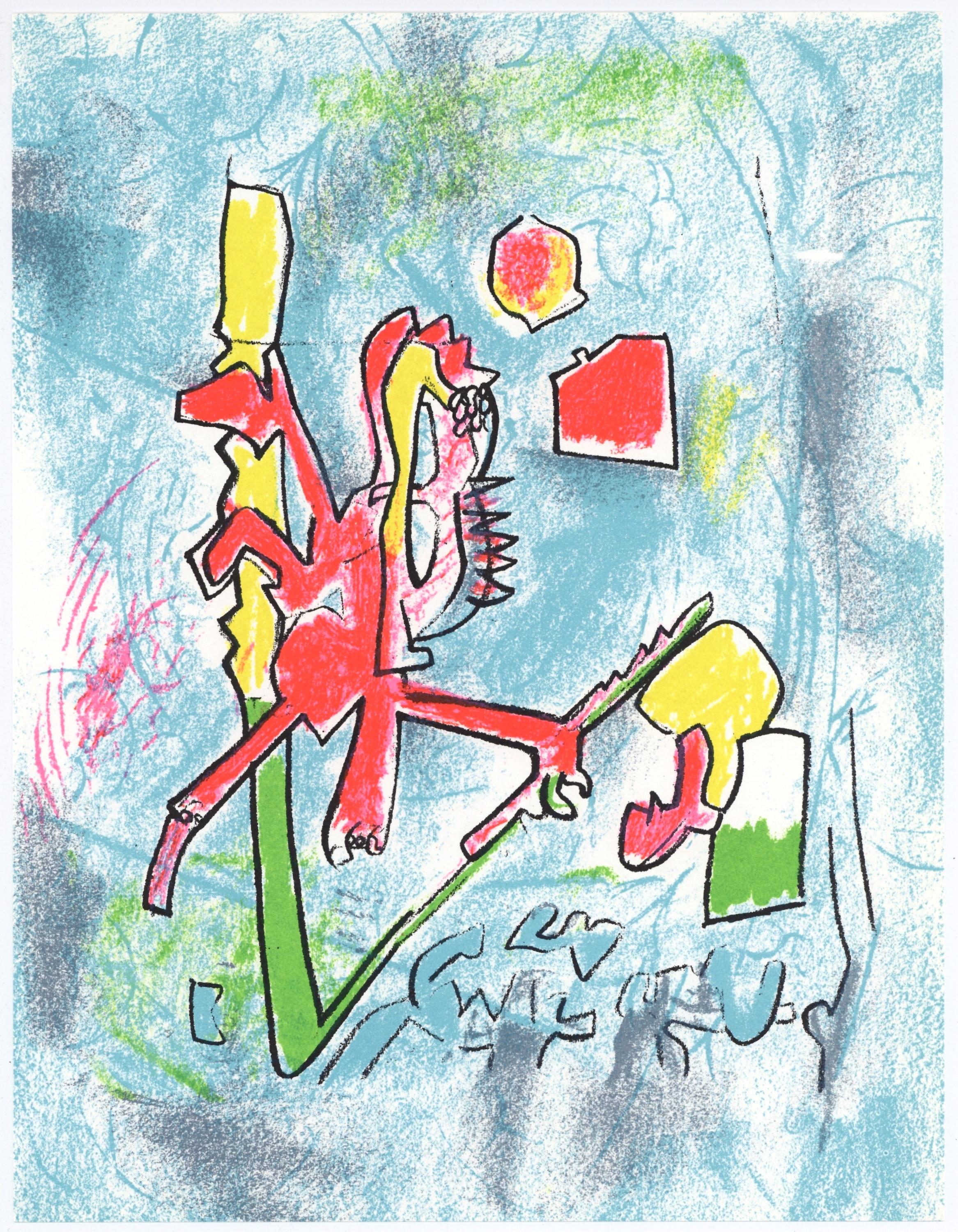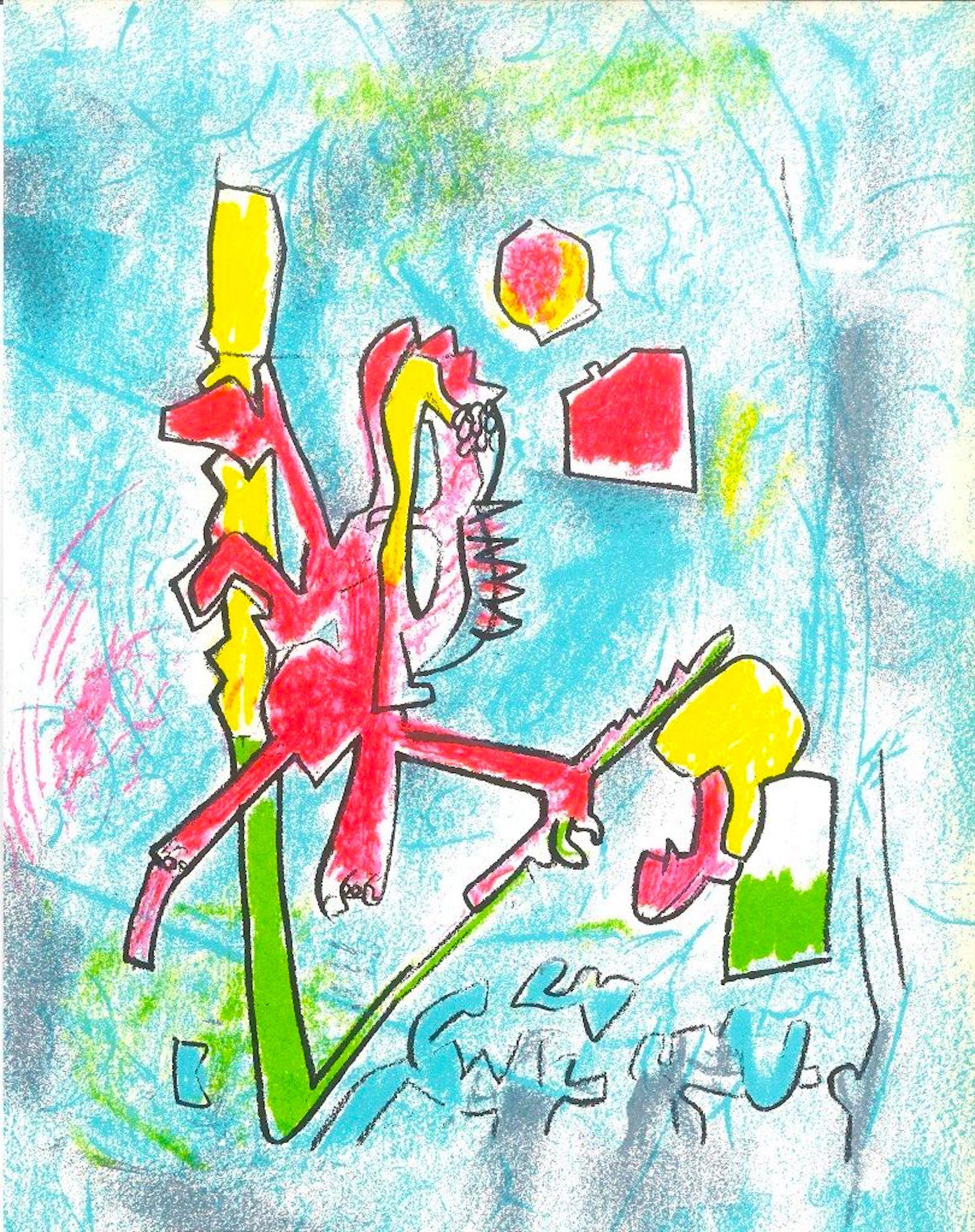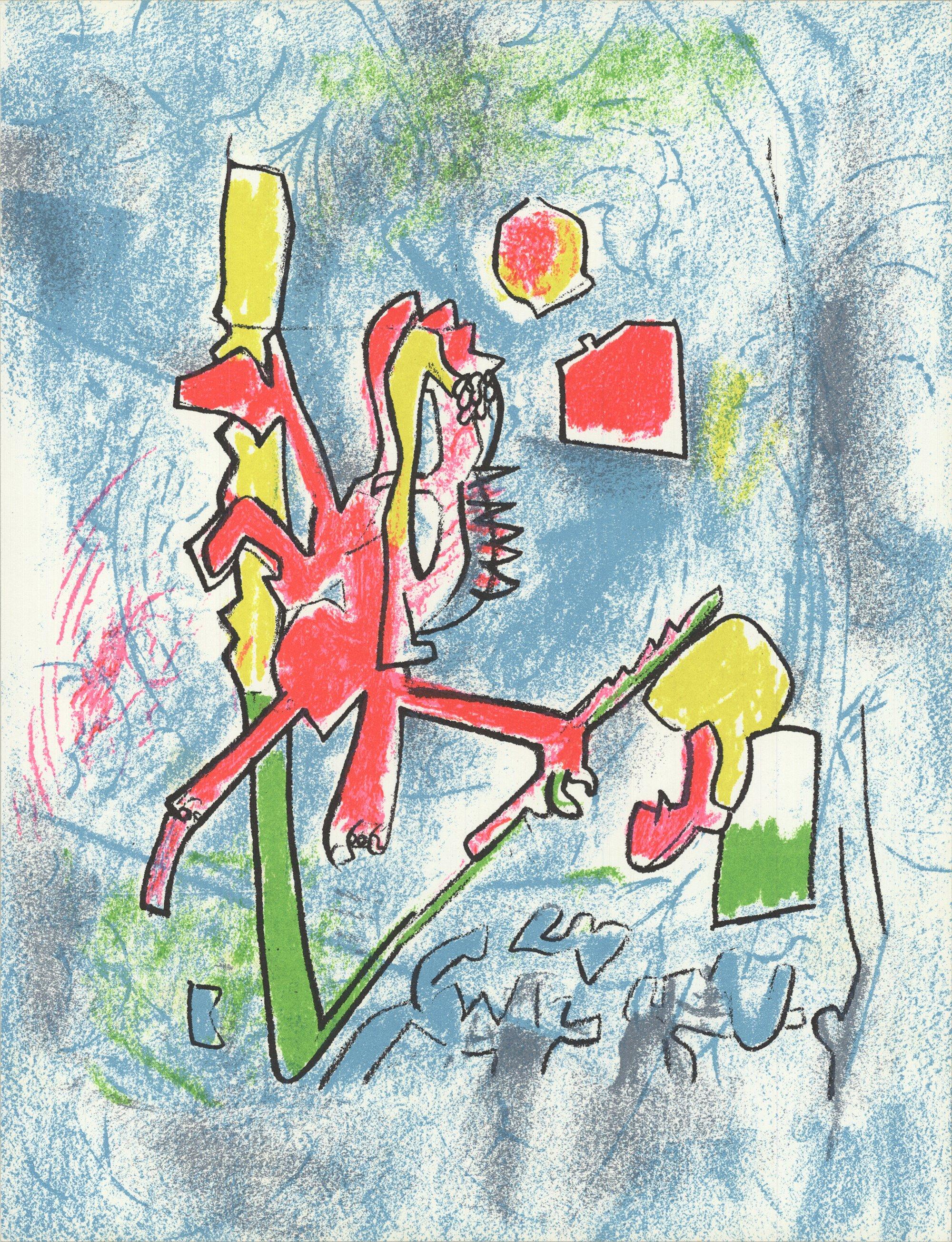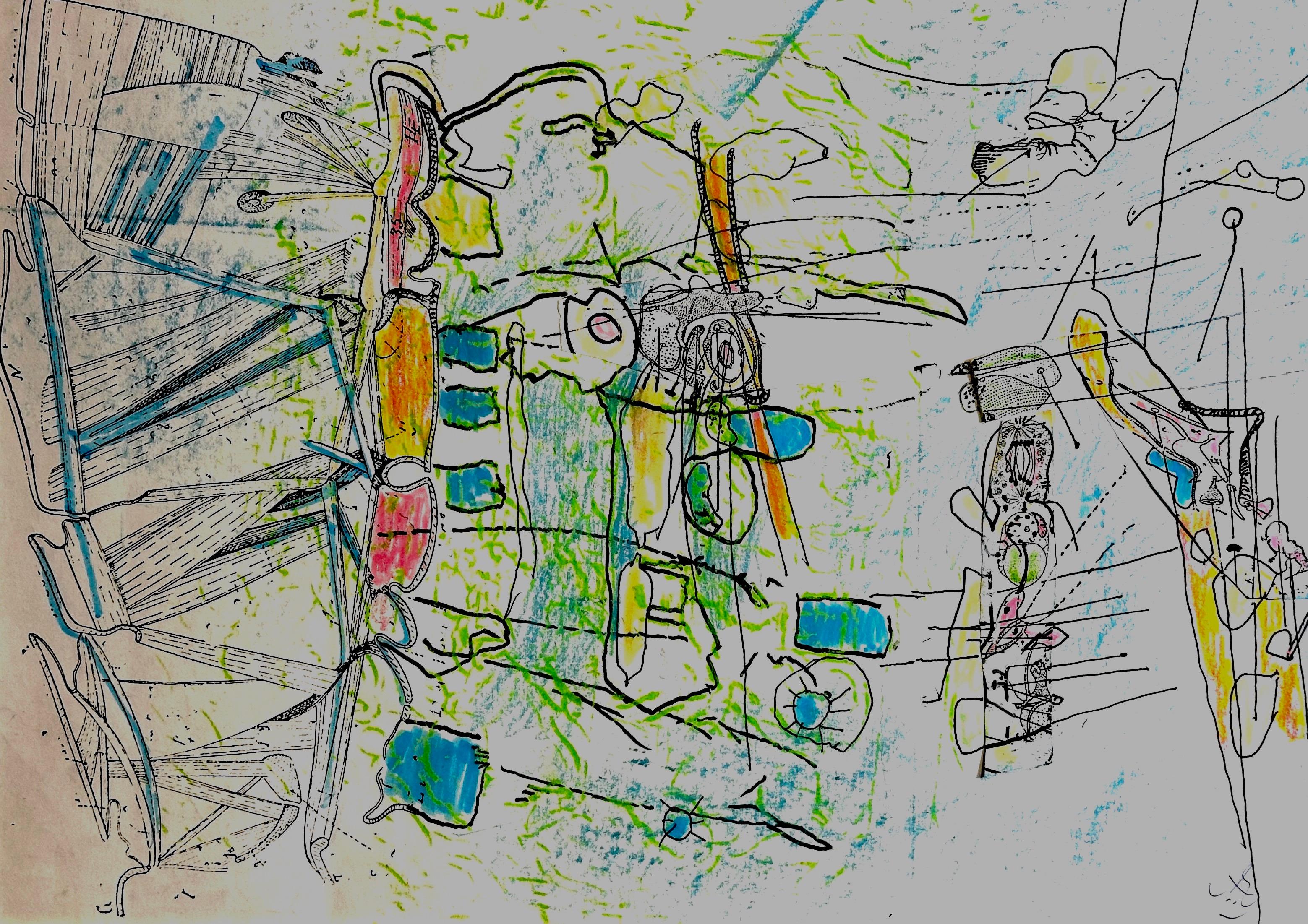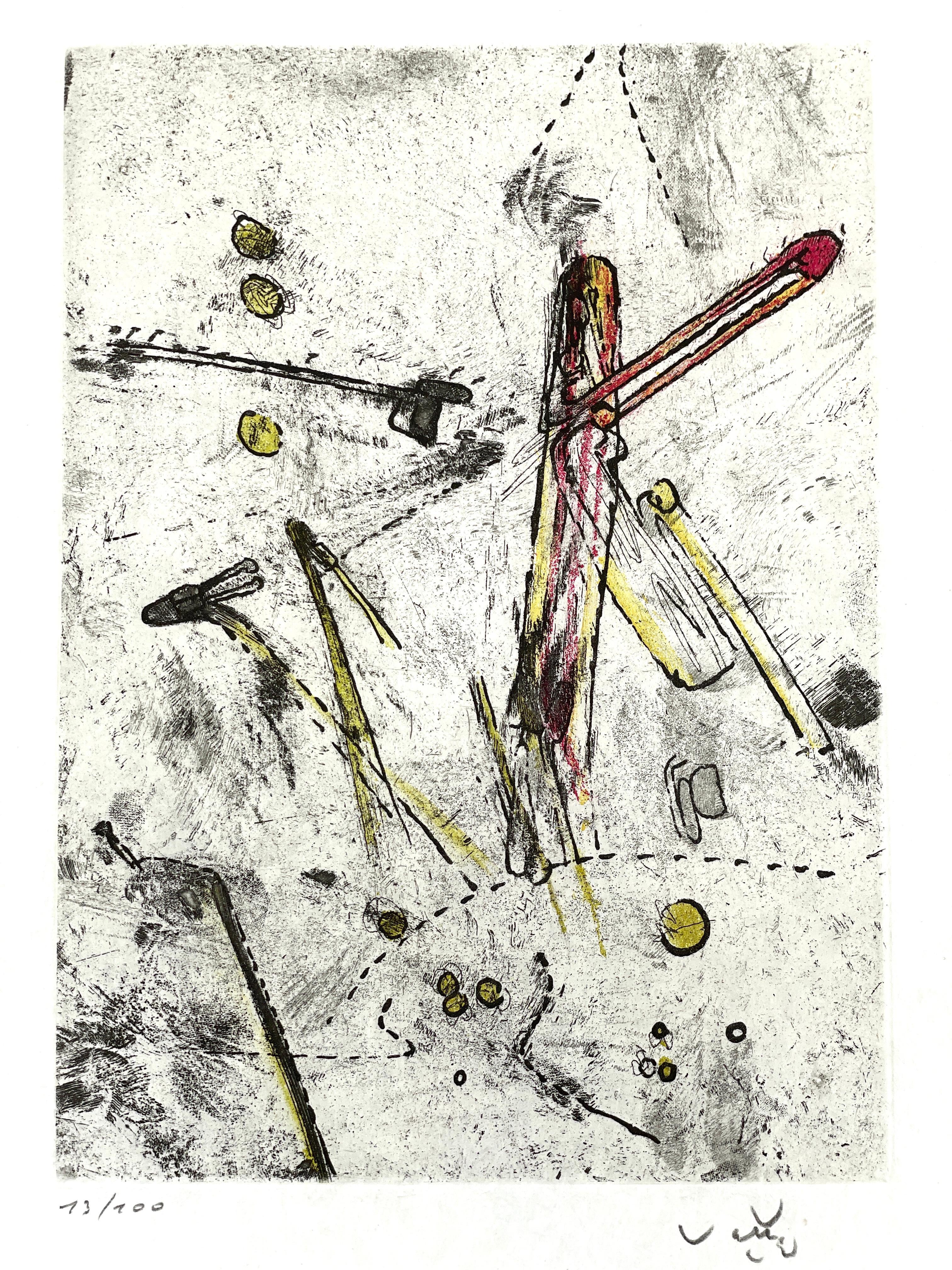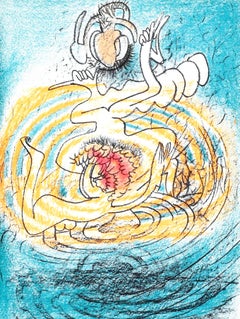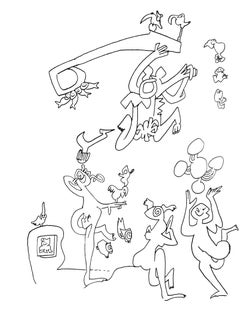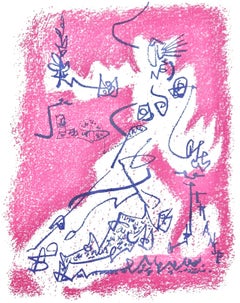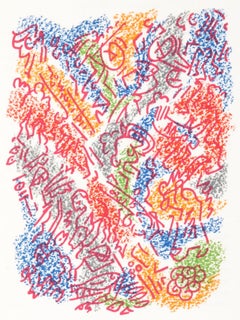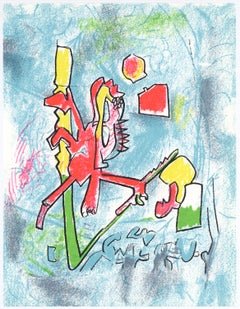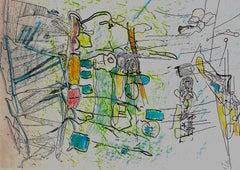This exquisite lithograph by Roberto Matta (1911–2002), titled Le Soleil Noir de la Melancolie (The Black Sun of Melancholy), from the album XXe siecle, Nouvelle serie, XXXVIIe Annee, No. 45, originates from the 1975 edition published by Societe Internationale d'Art XXe siecle, Paris, and printed by Mourlot Freres, Paris, 1975. Le Soleil Noir de la Melancolie exemplifies Matta’s visionary exploration of surreal and cosmic space, where color, form, and emotion intertwine to reveal the subconscious architecture of the human spirit.
Executed as a lithograph on velin paper, this work measures 12.5 x 9.75 inches. Unsigned and unnumbered, as issued. The edition exemplifies the superb craftsmanship of Mourlot Freres, Paris.
Artwork Details:
Artist: Roberto Matta (1911–2002)
Title: Le Soleil Noir de la Melancolie (The Black Sun of Melancholy), from the album XXe siecle, Nouvelle serie, XXXVIIe Annee, No. 45
Medium: Lithograph on velin paper
Dimensions: 12.5 x 9.75 inches (31.75 x 24.77 cm)
Inscription: Unsigned and unnumbered, as issued
Date: 1975
Publisher: Societe Internationale d'Art XXe siecle, Paris
Printer: Mourlot Freres, Paris
Catalogue raisonne reference: Germana Ferrari, Matta: Catalogue raisonne de l'oeuvre grave, 1969–1980, Turin: Gruppo Editoriale Fabbri, 1980, illustration 283.
Condition: Well preserved, consistent with age and medium
Provenance: From the album XXe siecle, Nouvelle serie, XXXVIIe Annee, No. 45, published by Societe Internationale d'Art XXe siecle, Paris, and printed by Mourlot Freres, Paris, 1975
About the Publication:
Gualtieri di San Lazzaro's XXe Siecle (Twentieth Century) was one of the most influential art journals of the modern era, founded in Paris in 1938 as a platform for the greatest painters, sculptors, and writers of the 20th century. San Lazzaro, a visionary editor, critic, and champion of modernism, believed that art and literature should coexist as expressions of a shared human imagination. Under his direction, XXe Siecle became a cultural bridge between Europe and the wider world, publishing special issues devoted to leading figures such as Picasso, Matisse, Chagall, Braque, Calder, Miro, Kandinsky, and Leger. Each edition combined essays by renowned critics and poets with original lithographs printed by the foremost ateliers of Paris, London, and New York, including Mourlot, Curwen, and Universal Graphics, creating a uniquely rich dialogue between text and image. Through XXe Siecle, San Lazzaro preserved the creative spirit of the avant-garde during and after World War II, championing freedom of expression and the evolution of abstraction, surrealism, and modern thought. Over nearly four decades, the journal shaped international taste and defined the intellectual landscape of postwar art publishing. Today, XXe Siecle remains celebrated for its extraordinary synthesis of art, literature, and design, an enduring testament to Gualtieri di San Lazzaro's belief that the visual arts are the soul of the modern age.
About the Artist:
Roberto Matta (1911–2002) was a Chilean-born painter, draftsman, and architect whose visionary fusion of Surrealism, abstraction, and metaphysical inquiry made him one of the most transformative artists of the 20th century. Over a prolific career spanning seven decades, Matta redefined modern painting by merging the psychological and the cosmic, creating vast, multidimensional universes that visualized the architecture of the human mind and the rhythm of the universe. Born in Santiago, Chile, he studied architecture before moving to Paris in 1933 to work under Le Corbusier, soon immersing himself in the city’s avant-garde alongside Pablo Picasso, Alexander Calder, Alberto Giacometti, Salvador Dali, Joan Miro, Wassily Kandinsky, Marcel Duchamp, and Man Ray. Encouraged by Andre Breton, Matta joined the Surrealists and quickly distinguished himself through luminous, biomorphic “inscapes” that depicted the subconscious as infinite energy and emotional space. His early works, such as Psychological Morphology (1938) and Invasion of the Night (1941), combined Surrealist automatism with architectural structure and cosmic vision, forging a new form of painting that united dream and reason. Fleeing war-torn Europe, Matta moved to New York, where his gestural dynamism and exploration of psychic landscapes profoundly influenced the Abstract Expressionists, including Jackson Pollock, Arshile Gorky, Mark Rothko, and Robert Motherwell. His paintings of the 1940s and 1950s—such as The Earth Is a Man (1942) and Les Voix (1943)—transformed Surrealist abstraction into an emotional and spatial experience that redefined how the human psyche could be visualized on canvas. Returning to Europe after the war, Matta expanded his artistic vision to include political and social concerns, channeling his moral intensity into monumental compositions like La Question Djamila (1959), which used biomorphic abstraction to critique violence and injustice. His mastery of color, form, and light gave his paintings a sense of infinite movement, reflecting his belief that art was a mirror of creation itself. Throughout his career, Matta’s art bridged science and spirituality, exploring quantum structure, emotional resonance, and cosmic order, while inspiring later generations of artists including Anselm Kiefer, James Turrell, and Julie Mehretu. Exhibited at major institutions such as the Museum of Modern Art, the Tate Modern, and the Centre Pompidou, his work remains a cornerstone of 20th-century art—bridging Surrealism, Abstract Expressionism, and metaphysical abstraction. Standing alongside Pablo Picasso, Alexander Calder, Alberto Giacometti, Salvador Dali, Joan Miro, Wassily Kandinsky, Marcel Duchamp, and Man Ray, Matta is celebrated as one of the great architects of the modern imagination. His highest auction record was achieved by Le Grand Transparent (1941), which sold for $5.02 million USD at Sotheby’s, New York, on November 16, 2011, confirming his enduring legacy as one of the most visionary, intellectually profound, and collectible artists of the modern era.
Roberto Matta Le Soleil Noir de la Melancolie, Matta 1975 XXe siecle, Matta Mourlot lithograph, Matta velin paper, Matta collectible print.
